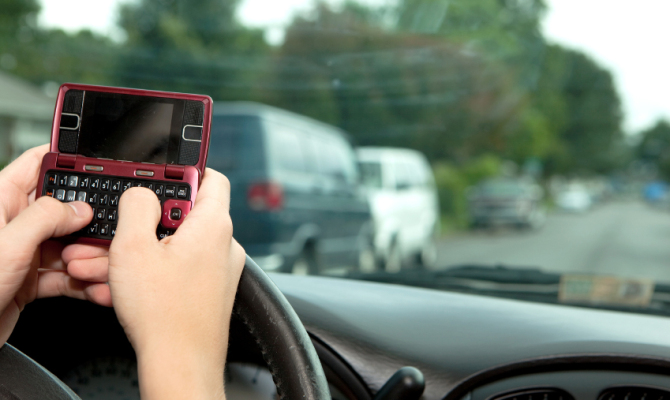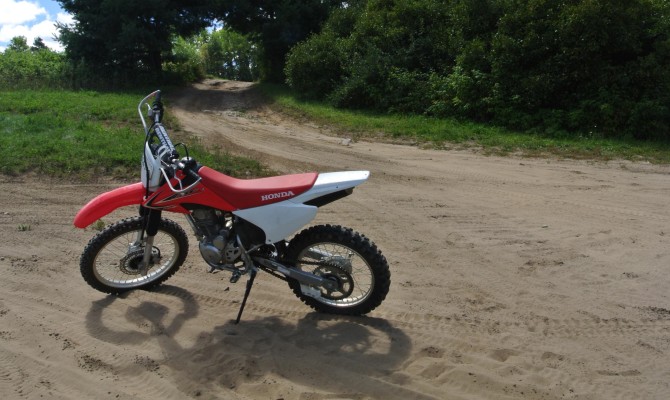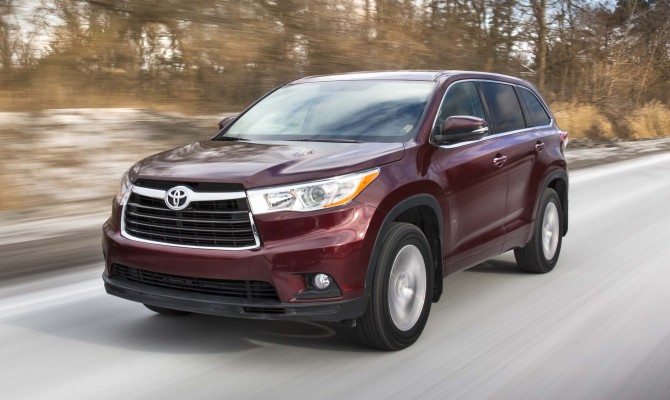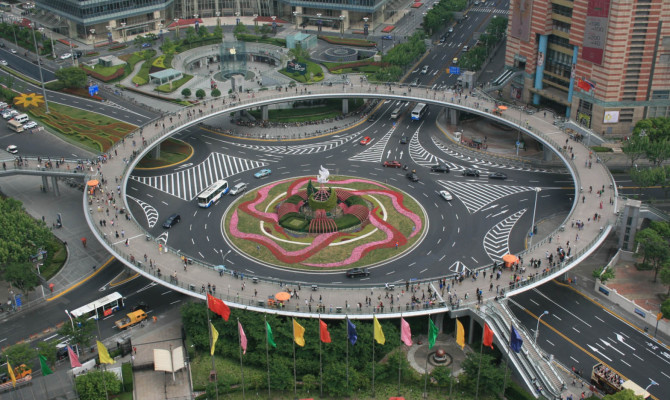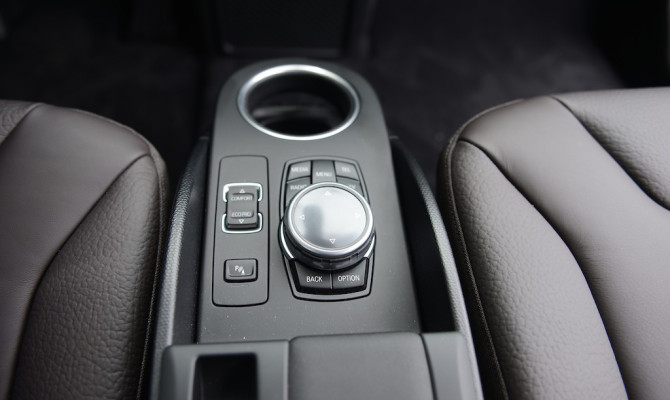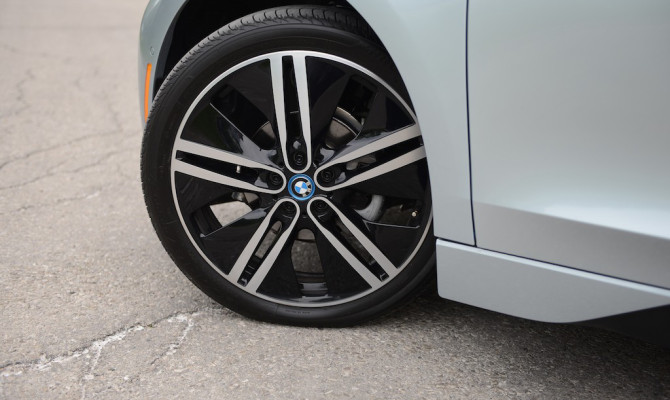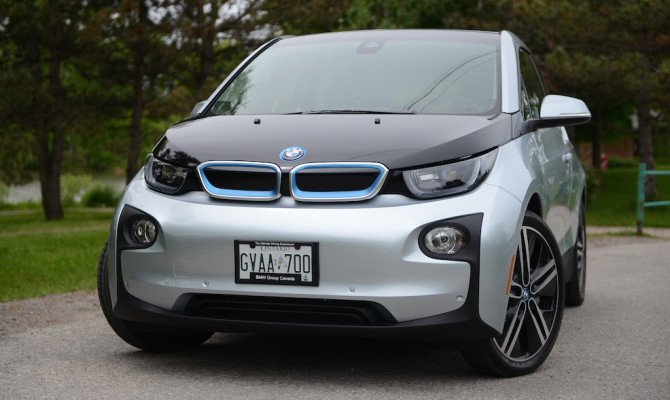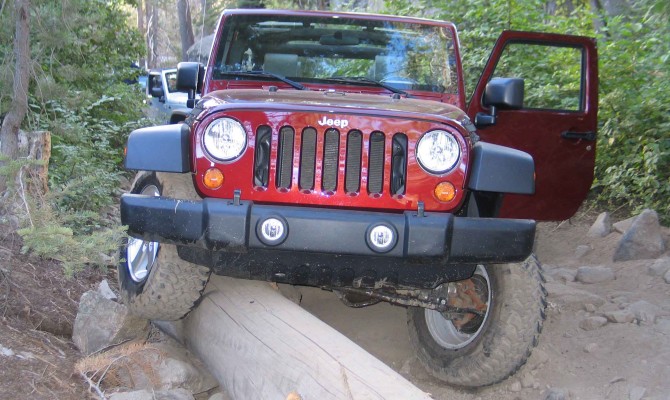Driving across Canada’s is on many people’s bucket list. Respected auto journalist Mark Richardson recalls his journey along Canada’s Road.
Canada’s a big country, second only to Russia in size. The highway that links her 10 provinces is 7,700 kilometres long, and I drove it in the summer of 2012 as research for my book, Canada’s Road.
Actually, that should be “research” with wagging quote fingers, because I’m always looking for a good road trip. Road trips are usually rushed affairs, hustling somewhere to enjoy the drive but with little time to stop and enjoy the scenery, but that summer, I slowed it all down and took 10 weeks for the drive. Much better.
It helped that my ride was a 2012 Chevy Camaro convertible, supplied for the trip by General Motors. It was loaned for three months; I put almost 27,000 kilometres on it, driving back and forth and twice across the country. The only thing I needed to change on it was the oil, and it didn’t put a tire turn wrong.
That year was the highway’s 50th anniversary, opened by Prime Minister John Diefenbaker on Sept. 3, 1962. I wanted to know if our Canadian icon is still important or just something now to brag about at international cocktail parties. There are lots of roads in the world; there are plenty of highways in Canada. What makes this one so special?
It was often a surprise for people to realize the TCH is only 50 years old – it’s taken for granted these days that there’s a road leading pretty much anywhere we want to go, and the road has always been there.
In fact, it’s been just a hundred years since the very first Canadian coast-to-coast road trip, driven by two guys in an open REO. Thomas Wilby and Jack Haney took 53 days to make it from Halifax to Victoria, but there were no roads in many parts of the country; when they reached North Bay, they had to put their car on trains and boats to cross the 1,700 km to Winnipeg, and in the Rockies, they had to detour through Washington state for a while.
The final road that made it possible to drive the width of Canada was not built until 1943, a stretch of gravel from Hearst to Geraldton in northern Ontario. It wasn’t the Trans-Canada, although it became a part of it when Diefenbaker eventually declared the highway open.
That was a proud day for Canada, despite both Newfoundland and New Brunswick boycotting the ceremony at B.C.’s Rogers Pass; the two provinces were holding out for more money to finish paving and smoothing the road. The TCH really wasn’t complete until 1970, and even now, billions of construction dollars in Quebec and Alberta are widening the road into four lanes to make it safer and more efficient.
The Trans-Canada is not always such an impersonal, high-speed highway. There are still many kilometres of two- and three-lane asphalt, winding through some of the most scenic areas of the country.
We have the Rogers Pass and the Kicking Horse Pass – impossible roads through high mountains considered impassable a few generations ago. We have the Fraser Canyon, clinging to the cliffside. We have the panoramic prairie, wide and swift. And we have the north shore of Lake Superior, built expressly as a scenic route to attract international tourists. On a clear day, there is nothing to surpass driving through a deep rock cut and dropping down through the green forest toward the shoreline of the broad lake, blue in summer, white in winter.
In Quebec, the TCH unfolds as an anonymous fast highway toward the Gaspe but encourages tourists to turn onto its original route, Hwy. 132, which runs close and parallel and follows the picturesque southern shore of the St. Lawrence. And in New Brunswick, the Trans-Canada sweeps drivers beside the Saint John River and toward the coast; it crosses into both Prince Edward Island and Nova Scotia and then up to Cape Breton, becoming for a few dozen kilometres a part of the Cabot Trail.
Then over on the ferry to Newfoundland, where the highway is the only link between the island’s west and east, just as it is on the other side of the country; in British Columbia, it’s the only paved link on Vancouver Island to Victoria, at the other end of another ferry.
The Trans-Canada Highway may not be the most efficient road in the world, and it still has a few dangerous twists and turns, but yes, it’s still important and it makes a great road trip, however long you’re able to take for the journey.
It’s a true Canadian compromise: a bit of everything for everyone – beauty, industry, and practicality – that pushes through our differences to link the country.
Mark Richardson’s book, Canada’s Road: A journey on the Trans-Canada Highway from St. John’s to Victoria, is published by the Dundurn Press.
“As we traverse the topography, it’s almost as though one of the Norse gods, or trolls, is looking over us from above and shaking a sifter of powdered sugar.”
(more…)
“My biggest fear is that someone I love will be in a horrific, life-changing, potentially fatal car accident.”
by Lauren Kramer
**********
My kids have my permission to yell at their dad whenever they spot him using his cell phone while driving.
Which, unfortunately, is often. I’ve coached them on what to say: “You’re putting my safety at risk,” “You’re breaking the law,” and “Dad, put your phone away this minute!”
I’m not alone when I say my biggest fear is that someone I love will be in a horrific, life-changing, potentially fatal car accident. And every time a driver picks up their phone while operating a car, that accident becomes increasingly likely.
We’re all doing it, but we know we shouldn’t.
Sneaking peeks at our cell phones while we’re driving has become an irresistible temptation as more and more of us become addicted to checking email, responding to texts and answering calls whenever they come in – and no matter what is going on around us.
It’s easy to rationalize. “This will just take a second,” we think, exaggerating the amount of time it takes to, say, respond to a text message. According to the Canadian Automobile Association the average distraction time for this task is 22.6 seconds, the distance of 373 metres of travel at 40 km/h and the equivalent of four intersections or 68 parked cars.
But it’s not just the texting time that’s so perilous, it’s the time it will take you to regain your focus on the road, to bring your car to a standstill if you have to. Perception, reaction and braking time after a distraction like this – even something as minor as hitting two letters to type “OK” – is 25 metres, the equivalent of a lineup of 17 people.
That’s a long time when you’re controlling a powerful, hunk of metal like a car.
The truth is that cell phones have become every much as dangerous an addiction when driving as inebriation – even more so because they lack the ugly stigma associated with drunk driving. Yet the probability of being in a crash while you are distracted is horrifying. Texting, even just a word? You are 23 times more likely to crash. Talking on your cell phone – four-to-five times more likely. And reading that ‘urgent’ email that simply couldn’t wait makes you three times more likely to be in a potentially fatal accident, according to research by CAA.
Findings by ICBC show that distracted driving is the second leading contributing factor of vehicle fatalities in BC. That’s why, October 20, new penalties for distracted drivers were implemented in this province. If you are caught with your cell phone in hand or programming your GPS while driving, you’ll get a $167 fine and a deduction of three penalty points. It’s a rap on the knuckles but also a reminder to fight our addiction to electronic devices while we’re driving.
Because the fact is, for even the best drivers, it’s impossible to safely split your attention while you’re driving. Don’t be fooled if you’ve been lucky thus far, because driving while distracted and not crashing or causing an accident has more to do with luck than competence. And seriously, why wait for luck to run out?
Overcoming that cell phone addiction on the road is as easy as turning off your phone and putting it in the glove box or trunk of your car, where you absolutely cannot reach it while you are driving. That’s what instructors at Mercedes Benz Driving Academy insist their students do when they step into a car. Yes, I know, you are expecting an important call so you don’t want your phone off. In that case, Bluetooth or wired headsets (worn only in one ear unless you are on a motorbike) are the next best thing.
But the key is to make sure your phone is out of reach, because when it is within stretching distance, it’s a pinging candy bar most of us can’t refuse.
Contact: laurenkramer [at] shaw [dot] ca
Ganaraska Forest, Ontario.
“Remember, the trees don’t move,” coaches Al Lakas, chief instructor at Trail Tours.
These words offer some solace but little consolation to the confines of singe-track riding.
Claustrophobia is not a regularly referenced noun in my vocabulary, but when the local fauna and flora of the Ganaraska Forest are a hair’s length from your body, and the trail is inches wider than the handlebars of your bike, it’s hard to ignore.
The Medusa-like temptation to fixate on upcoming vegetation must be overcome. If you do happen to focus on them, it could be game over.
“Oh, shoot, there’s a stum…”
Thud.
There goes the front end of your bike, and probably you.
If you look down, your handlebars might do a jig-like dance, and chances are, that’s where you end up. Down.
Breathing through the anxiety is one way of conquering the trails. Another is a strong foundation in riding. But the most important of them all: vision.
Before heading out onto the over 300 kilometres of trails nestled within the 11,000 acres of Ganaraska Forest, Trail Tours instructor Al gives my riding partner and I a lesson in a much less confining location.
Thank goodness.
Nestled in the heart of the seemingly limitless dirt biking and motorized vehicle playground is Trail Tours (www.trailtour.com.) It’s just over an hour’s drive east from Toronto and well worth the short-haul journey. After parking the car and walking a few paces through a trail, the world gets a little brighter. Literally and metaphorically.
The sinewy trees – well, in comparison to west coast wood – that lead us to home base doesn’t let in a ton of light, so at the end of the trail, where Trail Tour’s open field training facility stands before me, the sun overflows like a perfectly-iced cake (you can never have too much icing.)
Also, I’m going dirt biking. How could that not brighten your day?
Whether you’re a first timer or an experienced rider, they have a program for you.
Though this wasn’t my first rodeo in terms of dirt riding, it was in regards to single-track.
I could use all the tips and tricks I could get.
Furthermore, I could always use a little more practice riding in the sand. Yikes.
Day 1 of the two-day adventure consisted of making sure the techniques for single-track riding were fresh in our minds.
It’s best just to ignore the trees or whatever hazards engulf you and the bike. Acknowledge them, but don’t stare. Otherwise, your fate will likely be sealed.
After practicing in the various loops – there are different areas of their facility that cater to different techniques – it was off to the practice trail.
Needless to say, I was not setting any speed records but it wasn’t about speed. That comes with time and experience. It was getting used to the fact that I didn’t have a lot of wiggle room and that my mind would want to play tricks on me if I didn’t relax, let the bike and myself breathe, and enjoy the best that machine and Mother Nature have to offer.
Day 2 was a game changer.
I was so happy that I did some basic skills the day before because I embraced the various tones and textures of the perpetually evolving geography around me.
Rocks, gravel, soil, sand (oh, there was a lot of sand), steep inclines, tree stumps, sharp corners, you name it, the Ganaraska Forest has it.
Though I didn’t go at it alone. Groups were organized by skill level and were lead by individuals who know that forest like the back of their hand. Heck, I would have been lost after the first two turns.
If you found that throughout the day you wanted a more advanced riding, or wanted to take it easier, movement between groups was entirely possible. The name of the game there is safety, with fun at an extremely close second.
Challenging yourself, your mind, your body and the bike is all part of the package.
And what an incredible way to do it.
Trail Tours is open from May until the end of October.
Visit www.trailtour.com for more information.
Simple math and rudimentary physics teaches us that the harder people hit, the harder they fall…
B.C. drivers are getting used to a faster life in the fast lane very quickly.
News of the hike of 10 km/h to the posted speed limit on long stretches of major highways was announced swiftly the other weekend, taking many by surprise.
By Sunday, I was taking a 2014 Toyota Highlander for a faster spin on the Okanagan Connector/Coquihalla Highway route than I had expected when I headed to Kelowna days earlier. What was still more surprising was that the signage reflecting the higher speed limits was already up. (I’ve never see the provincial government bureaucracy move so fast!)
This was not going to be a trip to try to prove or disprove Toyota’s boast that the 3.5-litre V6 under the hood would, with the aid of the six-speed auto transmission, transport me to the coast sipping just 8.2-litres for every 100 klicks travelled. No, I would be calling on all 270 horses to do more than canter up those steep hills that separate the Okanagan from the Lower Mainland.
Climbing to the Pennask summit was a quiet and fast run. The cruise control was set to the maximum limit of 120 km/h… and I was passed by everyone on the road!
Some things don’t change. Hike the limit and most drivers will tack on another 10 klicks. I passed a few nervous folks, who seemed determined to stick to the defunct maximum of 110.
Speed differential is what causes big problems on the highway. If there is a wide variation and people are not showing lane discipline i.e. keep right unless passing, that’s a recipe for disaster as impatience and frustration takes over.
I tacked on another five klicks so as not to be too far out-of-sync with my fellow travellers. However, along stretches of the Coquihalla, my 125 wasn’t enough to satisfy the need for speed exhibited by many others. On the straights, 130 was the low end and I figure that most who passed me were travelling at nearer 140. The descent to Hope was like a racetrack but then it always is.
In the days that followed, the anti-speed lobby woke up and took to the airwaves with dire warnings of increased carnage. Simple math and rudimentary physics teaches us that the harder people hit, the harder they fall. Let’s hope the poor driving practices that lead to such collisions don’t increase and reprove such a simple truth.
P.S. I achieved 9.5 L/100km on the journey home.
The rush period, on a return trip from downtown on the Metro was surprisingly orderly and no different from SkyTrain on a busy hockey night, though far less boisterous…
“Rolex or Mao hat!” was the street hawker’s sales cry, as our rickshaw sped past him through the narrow streets of old Beijing.
It could also be the question posed for an emerging super-nation struggling to blend new-world economics with a communist social order.
Our four-city, 15-day tour of China included many other interesting and modern forms of transportation. To start with, we were very impressed with the cleanliness of airports and train stations. Eating or drinking is not allowed on metro trains in Beijing and Hong Kong and another plus was having important signage in English, as well as Chinese.
China now has more than four billion kilometres of highways and expressways, for road users. Rail travel is inexpensive and popular, and carried more than two billion passengers last year. The high-speed rail line system is expanding rapidly and expected to reach 18,000 km of track by the end of 2015. Shanghai also boasts the world’s first ultra high-speed maglev rail line.
In fact, the only old-world transport during this tour was that rickshaw, which could also be described as a pedi-cab. The only other rickshaws we saw were a few for sale at a closed “for hire” location near a ferry terminal in Hong Kong. The other city we visited was Xi’an, a famous fortress city at the Asian end of the historic “Silk Road”. It’s also the home of Terracotta Warriors, a UNESCO world heritage site.
Cars: China is the largest auto market in the world. More new vehicles are sold in China every year than in all of North America. While it has about a dozen major home auto manufacturers, most have production agreements with foreign auto makers.
Which explains why, for the most part, you’ll see the same Volkswagens, Buicks, Hondas and Toyotas that you’ll find on any street in Vancouver. How they’re driven is different. Many drivers ignore crosswalk rules, so it’s advisable to cross busy intersections with a group of fellow pedestrians, there’s safety in numbers!
Our in-car experiences were mostly taxis and all were Toyota Crown models. In fact, in all four cities, it seemed like every taxi was a red and white Toyota … even in Hong Kong where they drive on the left side of the road, a British legacy. One memorable drive was a speedy, wild taxi ride to the Airport in Shanghai, a “kiss the ground” on arrival experience. Should have taken the train.
Trains: Out first train experience was in the Beijing Metro system and it’s the fastest way of getting downtown. Even though there are vehicle restrictions that only allow odd and even license plates on alternative days, traffic congestion is a problem.
Beijing has the second longest subway system (in terms of track length) in the world (after Shanghai), but its average weekday ridership is over 10 million. During our week in the city, it actually recorded a world one-day ridership record of 11.24 million. By comparison, the weekday ridership on the SkyTrain system in Metro Vancouver is less than 400,000.
It’s certainly a good idea to plan a Beijing metro trip in advance, but we found it surprisingly easy to navigate. The rush period, on a return trip from downtown on the Metro was surprisingly orderly and no different from Skytrain on a busy hockey night, though far less boisterous.
We made an early morning start in Beijing to catch a bullet train to Xi’an. This 1,144-kilometre trip use to take more than 11 hours, but a high-speed (over 300 km/hour) train can do it in less than five. Impressively smooth, relatively quiet and comfortable, it’s a relaxed mode of travel and you can move around as much as you want. You don’t fully appreciate the high rate of movement until another bullet train passes in the opposite direction – there’s a sudden blur, whoosh and it’s gone!
Maglev looks like a traditional train until you realize it uses magnetic levitation – no wheels! Powerful magnets provide both lift and forward thrust and it can reach speeds of more than 400 km/hour. Unlike friction-based (wheeled) rail, it’s unaffected by snow, ice or rain.
The ride is also more cushioned ride than the bullet train. The track, which is about 30 km long, had banked corners and the trip took about ten minutes.
Last but certainly not least: A truly unique and relatively new transportation structure in Shanghai is the Pearl Loop Pathway. Above a massive roundabout in the heart of the financial district, this wide elevated circular pedestrian pathway has street-level escalators and connections to business towers and tourist attractions, including Shanghai’s famous Oriental Pearl Tower.
A transforming giant with a rich history, China never ceased to amaze.
Electric car buyers need to know if they can live with the limits of the electric cars’ range or if they want the flexibility to extend the range with an on-board generator…
This story could be obsolete in a month as automakers add electrification to existing models and introduce all new models, at an incredible rate.
The market for electric cars or plug-in hybrids is very small but it’s growing. The success of Tesla’s Model S has shot its stock price into the stratosphere, as investors bet on that company’s emergence as the electric car and technology leader. The stock price should really reflect the cars sold, as Tesla can only make about 20,000-25,000 cars annually for a worldwide market.
The Market
Green Car Report recently published a sales report on all electrics sold in Canada for the first six months of the year. The list of vehicles sold is compiled from companies’ self-reporting but Ford’s data is missing. This Green Car Report estimates that Ford’s numbers will push overall electric sales to 2,200 for the first half of the year, a 50 per cent improvement over a year ago. What we do get is a good snapshot of the market. With only 1,941 electrics officially counted, amounts to only 0.21 per cent of the overall Canadian marketplace. (Canadians are on track to buy almost 1.7 million vehicles this year.) So these are tiny but important numbers and the trend is higher. The clear winner isn’t the Tesla at all; in fact it is in third place behind the Chevy Volt and Nissan LEAF. Chevy sold 831 Volts up to July with Nissan selling 462 LEAFs and Tesla moving 290 Model S cars. The Smart Full Electric Drive comes in fourth with 163 cars sold and in its first month of sales (June) the BMW i3 looks good with 50 units sold.
Not all electric cars are the same
What many people don’t realize is the complexity of the electric car market. I look at it this way, if the car can be plugged into an outlet; it is at least partially electrified. There are pure electric cars like the Nissan LEAF, Tesla Model S, Smart Electric, Mitsubishi i-MiEV and BMW’s new i3 – all of these use just electricity to propel the car. Then there are electric cars that have an onboard generator, should the range of the electric pack limit driver’s intentions. The Chevy Volt, Cadillac ELR, the Toyota Prius Plug-In and the BMW i3 are, or can be equipped, with a gasoline engine to either drive the wheels or charge the battery. This is one area where the Chevy Volt wins. With roughly a 65 km range on pure electricity and a small generator on board to extend the range indefinitely, this car makes a lot of sense. This is why the BMW i3 has an optional generator for $3,000 to extend the range of that model. But if the buyer chooses this option, the range of pure electric drive is limited because of the added weight of the car. Electric car buyers need to know if they can live with the limits of the electric cars range or want the flexibility to extend the range with an on-board generator.
What is still to come?
We are living in interesting times.
More and more electric cars are being added, not to meet the demand but to meet regulatory requirements. For the model year 2016, the United States has a new cooperate average fuel economy (CAFE) standard that has each manufacturer trying to hit 35.5 mpg average across their fleet, including small trucks. This isn’t doable with the current internal combustion engine technology, so these manufacturers are looking to electrification as the answer. Even though more and more electric versions will arrive, don’t expect them to sell. In fact, most car companies don’t expect them to sell at all; they just want the mpg credit towards the new regulations. This might sound cynical but watch how many electric cars will arrive, especially for the 2016 model year, and how many you will actually see on the road. Most are built at a loss, to offset thirstier, gas-loving machines.
Verdict
Even though electric car sales are very small and many new models will go unnoticed, the trend to electrification is here. With markets like China mandating a percentage of electric cars to offset its horrific pollution, will help move the numbers of electric vehicles worldwide. This, along with steady adoption rates here in North America will help promote better charging infrastructure. Another factor is the price to own an electric car. The Smart Electric is priced at $27,000 making it the least expensive full electric car. With Nissan hacking its price on the LEAF to just over $31,000 and the Volt starting at roughly $35,000, these cars are more affordable than ever. I think the BMW i3 is very attractive for $45,000 because it is a luxury brand at an attainable price. The real showstopper will be the Tesla Model III that they hope to sell for US$35,000 with more than 400km of electric range when it is introduced in 2017.
Even though Tesla has the sex appeal going right now, don’t count out the other mainstream manufacturers with decades, if not centuries of auto making knowhow, to take on the challenge.
Camping is a great way to relieve some stress and spend time enjoying the great outdoors.
Some children complain about being taken from their video games or television programs, but the experience is one they will remember for a lifetime.
You don’t have to be an avid outdoorsman or spend a lot of money to go camping. Load your truck with a good tent, warm sleeping bag, and good food and you are on the road to a good time. If it’s your first time out pick a spot that’s not too far, maybe about an hour away.
Check the internet for the best locations and book your spot to avoid disappointment when you get there. Most sites have attractive locations such as a lake, ocean, or a river close by that you can plan hikes together. This will provide family activities for the day.
A good tent will make the trip that more enjoyable. If you don’t own one then here a few things to know about them, A-frame tents are usually smaller and can sleep two or three. They have a screened door and a small-screened window to keep mosquitos out. Remember to close the door after entering or exiting or you will be sleeping with them. Most A-framed tents come with a fly, which is waterproof material to cover the outside of the tent. If you’re camping on the coast bring a heavy duty tarp to help with the rain.
Dome tents utilize flexible poles that provide a strong structure when completed and can withstand stronger winds. You can also have larger dome tents that can be separated into rooms with hanging walls.
Cabin style tents are much heavier but provide much more headroom and more space, the down side to these tents are they are heavy, so plan on driving right to your campsite and you will be ok.
I recommend shopping around to see the tent that best fits your needs remembering you need enough space for your family and gear. A sleeping pad or air mattress will help make a good sleeping bag feel more comfortable. Be sure to purchase one that is full length so you are not constantly rolling off during the night.
Preparing food is fun. For safety’s sake, make sure you set up your stove in a level area to avoid any mishaps. If it’s your first time then bring foods that are simple to prepare. A typical propane stove has two burners and a propane tank attached to the side. These are easy to clean and just as easy to pack away.
Remember to bring lots of garbage bags so you can either take it home with you or use proper facilities at your campsite. Be sure to put your food away in your car preferably so as not to attract unwanted animals. Clean the area before you go to give the next person the same experience you enjoyed on your camping adventure.
If you choose to go off alone, give yourself an out, do not go further than you can walk out and find help or shelter before dark…
Your off-road fun can be seriously soured by a backwoods breakdown.
Before you head out, give some serious thought about what you would do if a major breakdown occurred. Ask yourself if you could deal with it on a little used trail with no one else around.
Firstly, you should never go it alone on a remote, seldom used trail. This is a good reason why 4X4 clubs are popular.
Even if you do not join a club, trail ride events are scheduled most times of the year and everywhere in the province. There is security here, with all kinds of help if you have any problems. It is also the best way to gain off highway experience.
If you choose to go off alone, give yourself an out, do not go further than you can walk out and find help or shelter before dark. Carry food and water enough in case you have to spend the night with a broken down vehicle. Be prepared for an accident with first aid supplies and training on how to deal with injuries. Always let someone know where you are going and when you will be back.
There are lots of things that can cause mechanical failures off-road. If you drive your vehicle regularly these things should show up when and where it is easier to deal with them than in the bush. Every situation is different so it would be impossible to list every possible cause and repair procedure for a breakdown.
Here are two of the most common types, starting with tires. Getting a flat tire is by far the most common type of breakdown. Always carry a good full sized spare tire. You might want to pack a plug kit, but most of the tire problems I have seen are either not repairable. An essential item is an air compressor. Airing down to gain better traction is only outweighed by the increased ride quality. This will increase the odds of a lost tire bead however.
Make sure your jack is in good working order. If you carry a High Lift Jack on the outside of your vehicle, check and oil it often. Another handy item for tire work is a nylon winch hold down strap. These can be put around the centre of the tread and tightened to re-seat the bead.
The second is breakage due to over-working your vehicle. The weakest link in the drive train seems to be the U-joints. If you break a U-joint there is a good probability that you will damage the yoke as well. This usually is not a trail side repair. Just remember that you are driving a four-wheel drive vehicle and you can most often get home with the front or rear drive disconnected. You will need to remove the drive shaft with the broken U-joint so that further damage is not done, then drive out in two-wheel drive. If this is a front axle steering knuckle U-joint, the half shaft will need to be removed and a rag stuffed into the end of the open axle housing.
Print the following comprehensive list and post it on the fridge door!
**********
Breakdown Essentials
1. Tool kit
2. Electrical repair kit (test light, wire, an assortment of wire terminals and wire terminal pliers.)
3. Jumper cables
4. Air compressor and hose.
5. Bailing wire
6. Latex gloves (these are great if you have to mess with a greasy U-joint and don’t have a good way to clean your hands along the trail.)
7.8’ X 10’ tarp (This is so much better to lay on instead of the ground when working under the vehicle.)
8. Low and high pressure tire gauges.
9. Tire repair kit
10. 3 or 4 quarts of engine oil (You can use this in a pinch for rear end and manual transmission oil)
11. 3 or 4 quarts of automatic transmission fluid (for automatic transmissions only)
12. A pint of brake fluid
13. Engine oil filter and filter wrench
14. Cargo boxes that you can put all this stuff into
15. Hold down straps to secure the cargo boxes
16. Leather gloves (for handling hot parts and winch cables)
17. Coveralls (it is nice to be clean after the repairs are made)
18. Any special tools that are vehicle specific.
19. Any parts that seem to break often on your vehicle
20. Jack
21. Tow strap
22. Flashlight with extra batteries
23. Full size spare tire
24. Propane torch
25. Acid core solder
26. Roll of paper shop towels
27. Can of WD-40
28. Plastic garbage bag (to cover large parts, doubles as raincoat)
29. Zip lock bags (to put small parts in)
30. Winch (if you go it alone self-recovery is very important) and kit with tree saver, snatch block, clevis etc.
We need some true leadership from Victoria on this portfolio and if we don’t get it soon we face gridlock in an ever widening area of the province…
Making sense of motoring madness in B.C. was the title of book published in the 1990s.
I recall it well because I wrote it and, observing what’s going on out there today, I’m beginning to think it’s time to prepare a new edition. The first edition dealt largely with the rules of the road but I guess a new version should look at the motoring mayhem we likely face if we do not get our infrastructure act together very soon.
The dreaded words “carbon tax” and “tolls” are currently being bandied around in relation to the recent Metro Vancouver mayors’ $7.5-billion transportation investment plan. The conundrum is that while the public screams for new roads and transit it doesn’t want to pay more either directly in taxes or through either of the aforementioned financing mechanisms.
A common cry is that governments at all levels should make do with what they have; such is the lack of trust in how they currently spend our money. That said it is unlikely there is enough fat in the system to fund the kind of transit and highway projects desired by the metro Vancouver area.
And this is not a problem exclusive to the south coast. In recent weeks, I’ve driven a number of regions in the province and there isn’t one that wouldn’t benefit from improvements. As I was crossing the $180 million William R. Bennett Bridge the spans Okanagan Lake to Kelowna, I couldn’t help but think that it was likely the last major bridge that would be built without the introduction of a toll.
A regional carbon tax, likely to be included in the cost of fuel, was a suggestion not well met by Lower Mainlanders, who now pay around $1.50 a litre for gas. Nevertheless, it might be a more equitable approach if it is regional rather than one levied across the entire province. It is truly a form of user pay taxation if the revenue is used exclusively in the area in which it is collected. You don’t trust that to happen, eh? – Thought not.
Tolls are another option but if they are charged only on specific new bridges, they tend to be expensive and thus encourage avoidance resulting in the clogging up of alternate routes. If one flat rate toll is applied to all crossings then people who have crossed their area’s bridges free of charge for years complain of unfairness. Another option is to include a transportation element in property taxes but that’s a no-go area for local politicians of all stripes.
The Metro Vancouver wish list will go to referendum next spring. Let me predict it will fail to win enough public support and we will be back where we started. We will be screaming for transportation upgrades but will have no way of paying for them.
We need some true leadership from Victoria on this portfolio and if we don’t get it soon we face gridlock in an ever widening area of the province.
Recent Comments
- { Enjoyed your Forest of Bowland in the BMW X5M, particularly the photo of the BMW in front of the main part of Stonyhurst College where... }
- { Bantam designed the Jeep, not Willy's or Ford. The American military gave the original Bantam prototype to Willys and Ford to copy. There is plenty... }
- { All Escalades come with a 6.2-lilter V8 engine that produces 420 horsepower. A six-speed automatic is the only transmission offered and drives the rear wheels.... }
- { Alexandra is an excellent journalist. }
Popular Posts
- Journey to a ‘Sparkling’ Luxury Okanagan Resort “Four lucky readers will put a Dodge Journey’s weekend-...
- The Need For Speed: Hike Those Highway Limits More than half of those polled believe the province sho...
- Drives-U-Crazy… Erratic drivers. An early morning drive from Kelowna to Vancouver is nor...
- Readers Respond: The Pros and Cons of Increasing B.C. Speed Limits Increasing the speed limits will only increase risk to...
- Honda CR-V Review: The Compact Crossover To Get Things Done The CRV is a very stylish and aerodynamic crossover veh...





